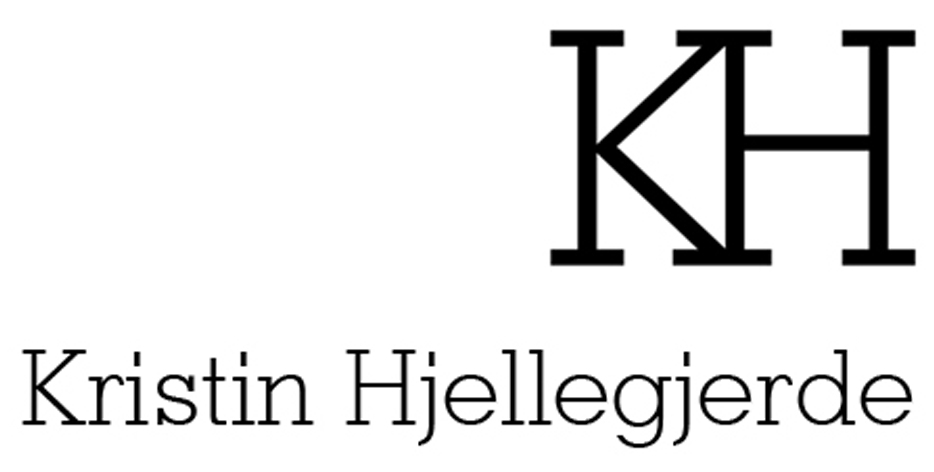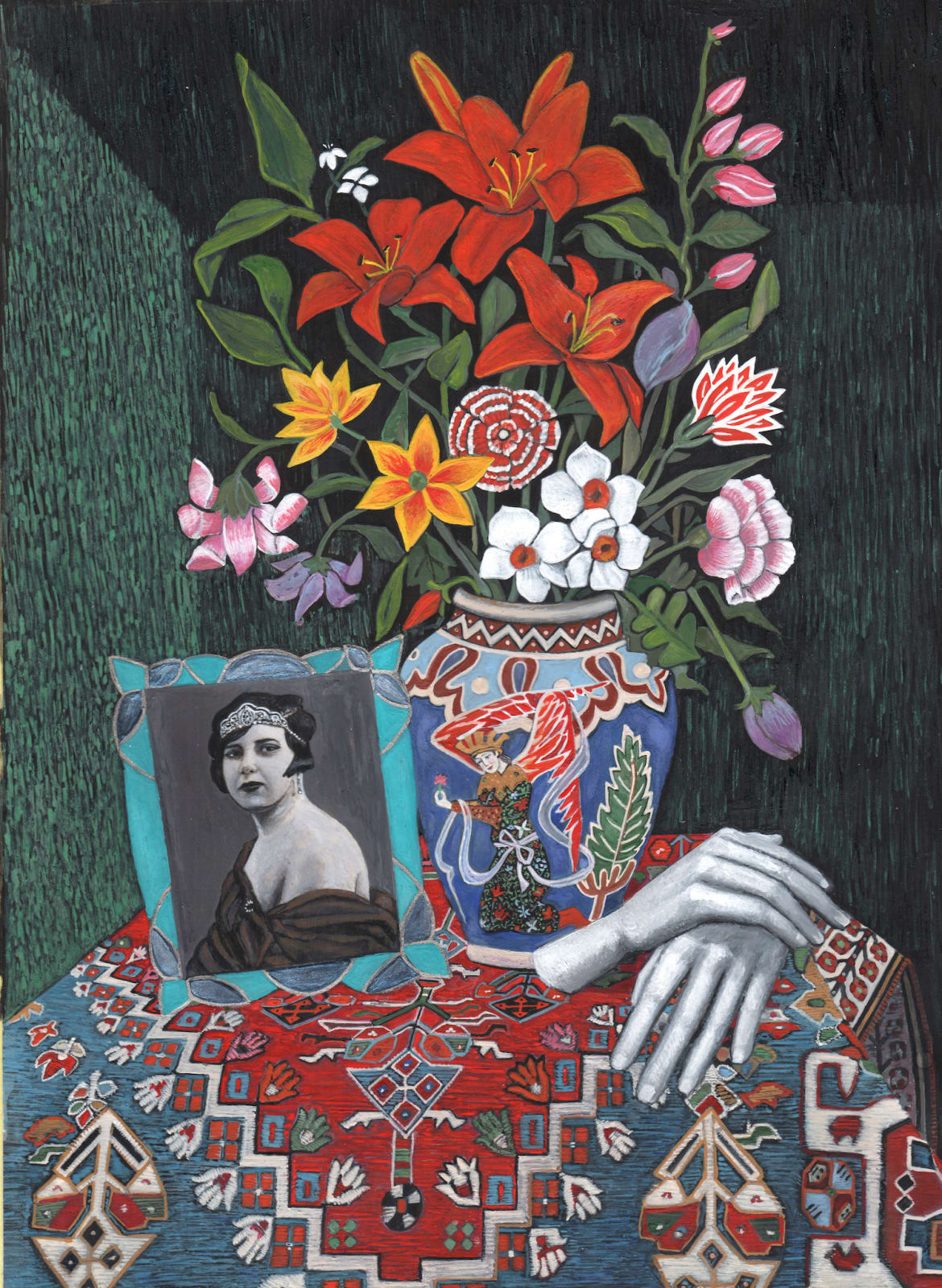Soheila Sokhanvari
Still, Life (portrait of Qamar-ol-Moluk-Vaziri) , 2019
Egg temepra on calf vellum
Painting Size:
25.4 x 18 cm
10 x 7 1/8 in
Framed Size:
71 x 51 cm
28 x 20 1/8 in
25.4 x 18 cm
10 x 7 1/8 in
Framed Size:
71 x 51 cm
28 x 20 1/8 in
Copyright The Artist
About Still,Life (portrait of Qamar-Ol-Moluk-Vaziri) 2019 Qamar-ol-Moluk Vaziri born in Takestan north of Iran in 1905 as Qamar Khanum Seyed Hosayn Khan, better known as Qamar, she was a celebrated...
About
Still,Life (portrait of Qamar-Ol-Moluk-Vaziri) 2019
Qamar-ol-Moluk Vaziri born in Takestan north of Iran in 1905 as Qamar Khanum Seyed Hosayn Khan, better known as Qamar, she was a celebrated Iranian singer, who was the first woman in Iran to sing in public without wearing a veil.
She was raised by her paternal grandmother since her father died before she was born, and she lost her mother to typhoid fever at one and half years old. Her grandmother was a religious singer/narrator at the private court of the Naser al-Din Shah Qajar and on insistence of Qamar her grandmother hired a music teacher, however, her grandmother died soon after and her music teacher took over her care. In his house she came into contact with many other musicians that helped and inspired her.
In 1924 she was invited to the Grand Hotel in Tehran, when she was 19 years old, Qamar says of the experience: “That night was my most memorable night, I will never forget. When I entered the hall, it was full of people. I went on stage and was given a large bouquet of flowers and everyone was clapping. This welcome experience gave me a lot of self-confidence. After the concert, I was called to the police station and I was told that I can no longer appear on stage without a veil. But I did not listen; I went on stage many more times without covering my hair and sang.”
It is said that during her performances, the audience would get so excited that they would place money, jewellery, anything of value on the stage for her. Qamar spent all these gifts on the poor, buying small houses to shelter the homeless, paying their debts, provided dowry to poor girls, and bought beds for hospitals.
Singing with the vocal range of a mezzo-soprano, she was revered for her mastery of the repertoire of Persian vocal music and recorded on several gramophone discs, her legacy includes over 200 memorable songs. Qamar’s voice was at its peak until 1953 when she was the sole female singer, later she had a stroke that ended her singing career. She became housebound and gradually forgotten. Contrary to popular belief that she died poor, she received a monthly salary of 800 tomans during the years preceding her death, which was about the salary of a high-ranking university teacher. Qamar died in 1959 in Tehran, her corpse went through ritual washing and preparation, it was taken to a local mosque in the morning to perform religious ceremonies and to call on the people to come say farewell to her, but the mosque custodians refused to accept the corpse of the famous female singer and she was buried without any ceremony.
Still, Life depicts a framed photograph of Qamar on a table next to vase of flowers and a pair of disembodied hands. The presence of the hands, questions whether they are real human hands, or a plaster sculpture positioned in a gesture of patience or perhaps submission, is unnerving and surreal, whilst the vase of vibrant, blooming flowers functions as a symbol of life. The angel on the vase is offering a flower to Qamar’s photograph. The title itself subverts the tradition of still life painting. Though the portrait is arranged as an object for the painter’s gaze, Sokhanvari’s placement of the comma invites us to consider a more complex perspective in which the singer is a symbol of the lasting life and power of art. Qamar-ol-Moluk-Vaziri is able to transcend her objectification and death through her music.
Still,Life (portrait of Qamar-Ol-Moluk-Vaziri) 2019
Qamar-ol-Moluk Vaziri born in Takestan north of Iran in 1905 as Qamar Khanum Seyed Hosayn Khan, better known as Qamar, she was a celebrated Iranian singer, who was the first woman in Iran to sing in public without wearing a veil.
She was raised by her paternal grandmother since her father died before she was born, and she lost her mother to typhoid fever at one and half years old. Her grandmother was a religious singer/narrator at the private court of the Naser al-Din Shah Qajar and on insistence of Qamar her grandmother hired a music teacher, however, her grandmother died soon after and her music teacher took over her care. In his house she came into contact with many other musicians that helped and inspired her.
In 1924 she was invited to the Grand Hotel in Tehran, when she was 19 years old, Qamar says of the experience: “That night was my most memorable night, I will never forget. When I entered the hall, it was full of people. I went on stage and was given a large bouquet of flowers and everyone was clapping. This welcome experience gave me a lot of self-confidence. After the concert, I was called to the police station and I was told that I can no longer appear on stage without a veil. But I did not listen; I went on stage many more times without covering my hair and sang.”
It is said that during her performances, the audience would get so excited that they would place money, jewellery, anything of value on the stage for her. Qamar spent all these gifts on the poor, buying small houses to shelter the homeless, paying their debts, provided dowry to poor girls, and bought beds for hospitals.
Singing with the vocal range of a mezzo-soprano, she was revered for her mastery of the repertoire of Persian vocal music and recorded on several gramophone discs, her legacy includes over 200 memorable songs. Qamar’s voice was at its peak until 1953 when she was the sole female singer, later she had a stroke that ended her singing career. She became housebound and gradually forgotten. Contrary to popular belief that she died poor, she received a monthly salary of 800 tomans during the years preceding her death, which was about the salary of a high-ranking university teacher. Qamar died in 1959 in Tehran, her corpse went through ritual washing and preparation, it was taken to a local mosque in the morning to perform religious ceremonies and to call on the people to come say farewell to her, but the mosque custodians refused to accept the corpse of the famous female singer and she was buried without any ceremony.
Still, Life depicts a framed photograph of Qamar on a table next to vase of flowers and a pair of disembodied hands. The presence of the hands, questions whether they are real human hands, or a plaster sculpture positioned in a gesture of patience or perhaps submission, is unnerving and surreal, whilst the vase of vibrant, blooming flowers functions as a symbol of life. The angel on the vase is offering a flower to Qamar’s photograph. The title itself subverts the tradition of still life painting. Though the portrait is arranged as an object for the painter’s gaze, Sokhanvari’s placement of the comma invites us to consider a more complex perspective in which the singer is a symbol of the lasting life and power of art. Qamar-ol-Moluk-Vaziri is able to transcend her objectification and death through her music.

